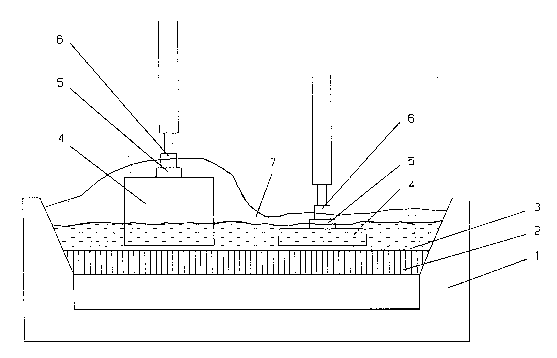Some of the information on this Web page has been provided by external sources. The Government of Canada is not responsible for the accuracy, reliability or currency of the information supplied by external sources. Users wishing to rely upon this information should consult directly with the source of the information. Content provided by external sources is not subject to official languages, privacy and accessibility requirements.
Any discrepancies in the text and image of the Claims and Abstract are due to differing posting times. Text of the Claims and Abstract are posted:
| (12) Patent Application: | (11) CA 2119100 |
|---|---|
| (54) English Title: | DEVICE FOR THE PROTECTION OF ANODE HANGER NIPPLES |
| (54) French Title: | DISPOSITIF DE PROTECTION DE SUPPORT D'ANODE |
| Status: | Deemed Abandoned and Beyond the Period of Reinstatement - Pending Response to Notice of Disregarded Communication |
| (51) International Patent Classification (IPC): |
|
|---|---|
| (72) Inventors : |
|
| (73) Owners : |
|
| (71) Applicants : |
|
| (74) Agent: | SMART & BIGGAR LP |
| (74) Associate agent: | |
| (45) Issued: | |
| (22) Filed Date: | 1994-03-15 |
| (41) Open to Public Inspection: | 1994-09-18 |
| Availability of licence: | N/A |
| Dedicated to the Public: | N/A |
| (25) Language of filing: | English |
| Patent Cooperation Treaty (PCT): | No |
|---|
| (30) Application Priority Data: | ||||||
|---|---|---|---|---|---|---|
|
A B S T R A C T
The present invention concerns a device for protecting
anode hanger nipples when manufacturing aluminium in a
Hall-Heroult electrolysis process, made of a composite
material consisting of carbon residues, hardening
material, water and a catalyst. The device is
characterised by two or more prefabricated,
dimensionally stable parts which are designed to be
joined in an arrangement in situ.
Note: Claims are shown in the official language in which they were submitted.
Note: Descriptions are shown in the official language in which they were submitted.

2024-08-01:As part of the Next Generation Patents (NGP) transition, the Canadian Patents Database (CPD) now contains a more detailed Event History, which replicates the Event Log of our new back-office solution.
Please note that "Inactive:" events refers to events no longer in use in our new back-office solution.
For a clearer understanding of the status of the application/patent presented on this page, the site Disclaimer , as well as the definitions for Patent , Event History , Maintenance Fee and Payment History should be consulted.
| Description | Date |
|---|---|
| Inactive: IPC from MCD | 2006-03-11 |
| Time Limit for Reversal Expired | 1996-09-17 |
| Application Not Reinstated by Deadline | 1996-09-17 |
| Deemed Abandoned - Failure to Respond to Maintenance Fee Notice | 1996-03-15 |
| Inactive: Adhoc Request Documented | 1996-03-15 |
| Application Published (Open to Public Inspection) | 1994-09-18 |
| Abandonment Date | Reason | Reinstatement Date |
|---|---|---|
| 1996-03-15 |
Note: Records showing the ownership history in alphabetical order.
| Current Owners on Record |
|---|
| NORSK HYDRO A.S. |
| Past Owners on Record |
|---|
| EINAR BAKKE |